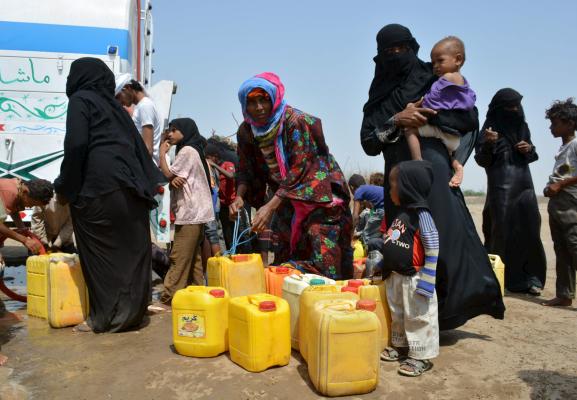Ten months ago, three gangs took over Yemen; the Iranian supported militia who are known as Houthis, the forces of the ousted president Ali Abdullah Saleh who was forced out after the Arab Spring and Al-Qaeda which swiftly filled the vacuum. Yemen has become like Syria where the majority of Syrians rebelled against the Iranian-allied Assad regime and the terrorist organization ISIS.
The bigger picture shows that Yemen is an important political and military experience not only in terms of important regional balance but also in the concept of crisis management. Despite it being too early to completely judge the intervention project in Yemen, a review of its developments gives us an idea of what is going on. This crisis in Yemen and the multi- fronted regional battle with Iran are being managed for the first time without America as an ally and without large petroleum incomes. This analysis is from an outside perspective and within the context of dangerous geopolitical shifts.
Analysis at a closer level reveals that what happened was a betrayal of Saudi Arabia and the Gulf countries and also a betrayal of the Yemeni people who rose against Saleh’s regime in the best manner and whose revolution was the most peaceful in the Arab world despite Saleh’s delays. The United Nations entered the crisis early and designed a democratic plan of governance where the people could choose their leader through elections. This process progressed successfully and peacefully, a transitional government was formed and the writing of the constitution began. A setback followed and the political process which was sponsored by the representative of the UN Secretary General deviated when the ousted president and Houthis tried to make Yemen like Lebanon where anyone who has weapons has a larger amount of power in the state. With Iranian backing, the Houthis and Saleh dared to use military force to impose their terms and then later took over Yemen entirely.
It became clear to Saudi Arabia and the Gulf Cooperation Council (GCC) that Iran had decided to expand the circle of regional conflict and expand its sphere of influence and that after Yemen, it would target Bahrain and perhaps southern Iraq and expand southwards. Iran succeeded in bringing its agent to rule the capital Sana’a through the use of arms and this was the challenge that Saudi Arabia and the GCC faced. At the same time, the superpower that had controlled the affairs of the Gulf for more than half a century i.e. the United States disappeared from the region. The Americans chose to leave the area to conflicting parties after beginning negotiations for Iran’s nuclear programme which whetted the Iranian leadership’s appetite for expansion and threatening the stability of the region.
In less than a year, we see that the rising power in Yemen today is the legitimate government which is supported by the majority of Yemen’s various political and tribal components and backed by the GCC and the Arab coalition which is the first of its kind. We see that this force is now victorious on the ground after it had been forced out of its country completely. It started off as a resistance with a small number of citizens from the region where the rebels deliberately destroyed it and humiliated its people but today the legitimate forces backed by Saudi-led coalition forces are approaching the capital Sana’a and control most of Taiz, Ma’rib, Lahij, Zanzibar, Aden and other cities.
There are many details of daily war related events and they are complex because of the multiplicity of forces and fronts; Houthi militias, Saleh’s forces, Al-Qaeda fighters and ISIS. The Houthis tried and failed to move the war to the Saudi borders to relieve the pressure on it in other combat zones. The legitimate forces known as the National Army are fighting Houthis alongside Gulf and Arab forces in northern areas such as the governorates of Hajjah and Al-Jawf, and also defeated Saleh’s forces in his areas of influence that surround the capital. A few days ago, they captured the Nihim camp which is the headquarters of the 312th Infantry Brigade.
The National Army which was built by the legitimate government with the support of Gulf countries in the past few months is also fighting Al-Qaeda in the south and east of the country, and more recently in the vicinity of Al-Mukalla. Al-Qaeda has recently been busy taking advantage of the National Army’s preoccupation with fighting insurgents in various and remote areas of Yemen. They also tried to attack other areas including the temporary capital Aden. However, the winds of war are still in favour of the legitimate forces and the coalition.
The “Yemeni model”, i.e. changing the reality of a situation with force, organised political efforts and a determined attitude despite the surrounding challenges is not a good choice and cannot be replicated on every occasion. However, it was necessary for the protection of the map that we see today. This model will affect the concept of geopolitical conflict in the entire region and regional players and others must take into account that the region’s countries are prepared and able to confront. The war in Yemen is important because it is linked to territorial wars in Syria, Iraq and even in Libya. Amidst the chaos, foreign forces like Iran, Al-Qaeda and ISIS are trying to seize these countries in a race the like of which the region has not seen before.
